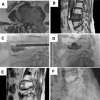Principles of Management of Spine Metastasis
- PMID: 32257036
- PMCID: PMC7096601
- DOI: 10.1007/s43465-019-00008-2
Principles of Management of Spine Metastasis
Abstract
Background: With evolution of medicine, radiation therapy and surgical methods, cancer care has improved the quality of life for patients with improved survival and functional status in patients with skeletal metastasis. The most common site of skeletal metastases from other primary malignant neoplasms is the spine, hence, understanding the epidemiology of metastatic spine disease and its presentation is essential for developing a diagnostic and treatment strategy which eventually results in optimum care to reduce disease-related morbidity.
Purpose: With this review article we intend to describe an evidence-based review on the presentation, diagnosis and treatment of metastatic spinal disease.
Methods: We reviewed the current available literature on management of spinal metastasis and have described a step wise evaluation and management strategy of metastatic spine disease.
Conclusion: The present review article addresses various aspects and related controversies related to evaluation, staging and treatment options in the management of spinal metastasis.
Keywords: Back pain; Radiotherapy; SRS; Spine metastasis.
© Indian Orthopaedics Association 2020.
Conflict of interest statement
Conflict of interestThe authors declare that they have no conflict of interest.
Figures




References
-
- Hosono N, Yonenobu K, Fuji T, Ebara S, Yamashita K, Ono K. Orthopaedic management of spinal metastases. Clinical Orthopaedics and Related Research. 1995;312:148–159. - PubMed
-
- Gerzten PC, Welsch WC. Current surgical managment of metastatic spinal disease. Oncology (Huntingt) 2000;14:1013–1014. - PubMed
Publication types
LinkOut - more resources
Full Text Sources
